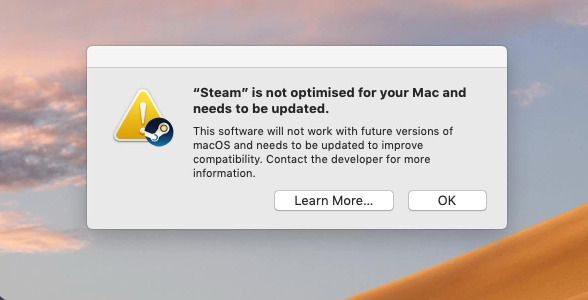
- #Clean utility for mac 32 bit how to
- #Clean utility for mac 32 bit software
- #Clean utility for mac 32 bit mac
To do this, click on the Apple icon in the upper left corner, then on “About This Mac” and then on “System Report.” When the report opens up, scroll down to the “Software” section and click on “Applications.”Īn alphabetical list of applications will appear with various details about each one.
#Clean utility for mac 32 bit how to
How to check for 32-bit programsįor those that are considering an upgrade to Catalina, a good first step is to see what 32-bit programs you are currently running to determine if they are important to you or not. Depending upon which version of the MacOS your computer shipped with, you may have to use an external hard drive to complete the reversion. There is no simple way to go back to the previous version (Mojave), so this option is very time consuming and complicated, as you’ll have to wipe your hard drive and reinstall everything. Though it’s a web-based tool, there are options for editing your documents when you are offline. It includes Docs, Sheets and Slides, which are Google’s version of Word, Excel and PowerPoint, although nowhere near as powerful.
#Clean utility for mac 32 bit software
If your needs for productivity software are very basic, you may find the free options available from Google through a Google Drive account to be acceptable. This means you either pay monthly ($6.99 for Home and Student) or annually ($69.99 for Home and Student or $99 for Business) from now on. Microsoft is trying to get users to convert from a single purchase package that will eventually expire to their subscription “SaaS” (Software as a Service) platform known as Office 365. The primary difference in the two packages is the Business version includes Outlook. You can purchase the Office Home and Student 2019 bundle from Microsoft for $149.99 or the Office Home and Business bundle for $249.99. If you have Office 2016, you should be able to upgrade to the 64-bit version through Microsoft’s standard upgrade process if for some reason it hasn’t already been updated. TinkerTool can perform a check on Time Machine backup snapshots, it can create a detailed log when backup goes wrong, or it can assign a Time Machine backup from an old to newer Mac.If your version of Microsoft Office is older than Office 2016 v15.35, you’ll have to choose from a variety of costly or time-consuming and complicated options.
#Clean utility for mac 32 bit mac
You can also create an emergency installation media in case something goes wrong with your Mac and fails to boot properly. You can reset an app’s privacy settings so it can't access critical data or perform security checks for authenticity. TinkerTool has a built-in application uninstaller to completely remove apps from your Mac. You can even check file and folder permissions and troubleshoot them. You can clean old log or crash reports, core dumps, and orphaned files.

You can check the file alias or Finder attributes to aid Spotlight search. TinkerTool lets you perform complex file operations not available in any app. You can clear the cache of a particular app causing problems, font cache of the user or OS, icon cache, and more. Rebuild the shared cache of the dynamic link editor, launch services, clear the memory cache of directory services, and recreate shared folder in case you accidentally delete them. If you’re facing weird issues related to apps, caches, Time Machine backups, or file permission issues, then TinkerTool can be of great help.



TinkerTool System 6 is a collection of system utilities that let you perform advanced administrative tasks not available to you through the conventional user interface. If Disk Utility repair options don’t work, boot into single-user mode and use "fsck" to fix your drive. From the dialog box that appears, select Macintosh HD and proceed. To do so, connect an external disk, then open Disk Utility and choose File > New Image > Image from Folder. You may need to create an image file of your startup disk. Keep holding the buttons until you see the Options window or a macOS Recovery screen. To do this, press and hold the Power button for an M1 Macs or press and hold Cmd + R while booting up for older Macs with an Intel processor. If your Mac won’t boot, you should open Disk Utility through Recovery Mode. If any problems arise, you can select the volume or disk you want to repair, then click First Aid. Disk Utility is a built-in tool for inspecting file systems, mounting or unmounting volumes, formatting drives, and fixing other problems.ĭuring startup, your Mac performs a consistency check of the partition scheme and volume directory structure.


 0 kommentar(er)
0 kommentar(er)
